All of our flowers in the Cape have started blooming, and we love the spring season.

And of course, the birds also love the new flowers.
First up is a Cape Sugarbird (Promerops cafer), and I don't know if it's a similar one that I have posted before, but these are all fresh photos. They are not seen often, as this is Malachite sunbird territory, and due to the fact that it is also nesting season, the malachite males divebomb the sugarbirds. So, the sugarbirds have to be very careful, but they cannot stay away from the lovely Protea Pincushion flowers.
*The Cape sugarbird is a specialist nectar feeder when it comes to feeding off Proteaceae. Its long, sharp beak is used to reach the nectar of a variety of species of protea with its long brush-tipped tongue. The staple diet of this sugarbird is nectar; however, it will also eat spiders and insects. The characteristic strong winds in the Cape may make feeding off protea heads difficult, but the Cape sugarbird has adapted to this with the development of sharp claws. *
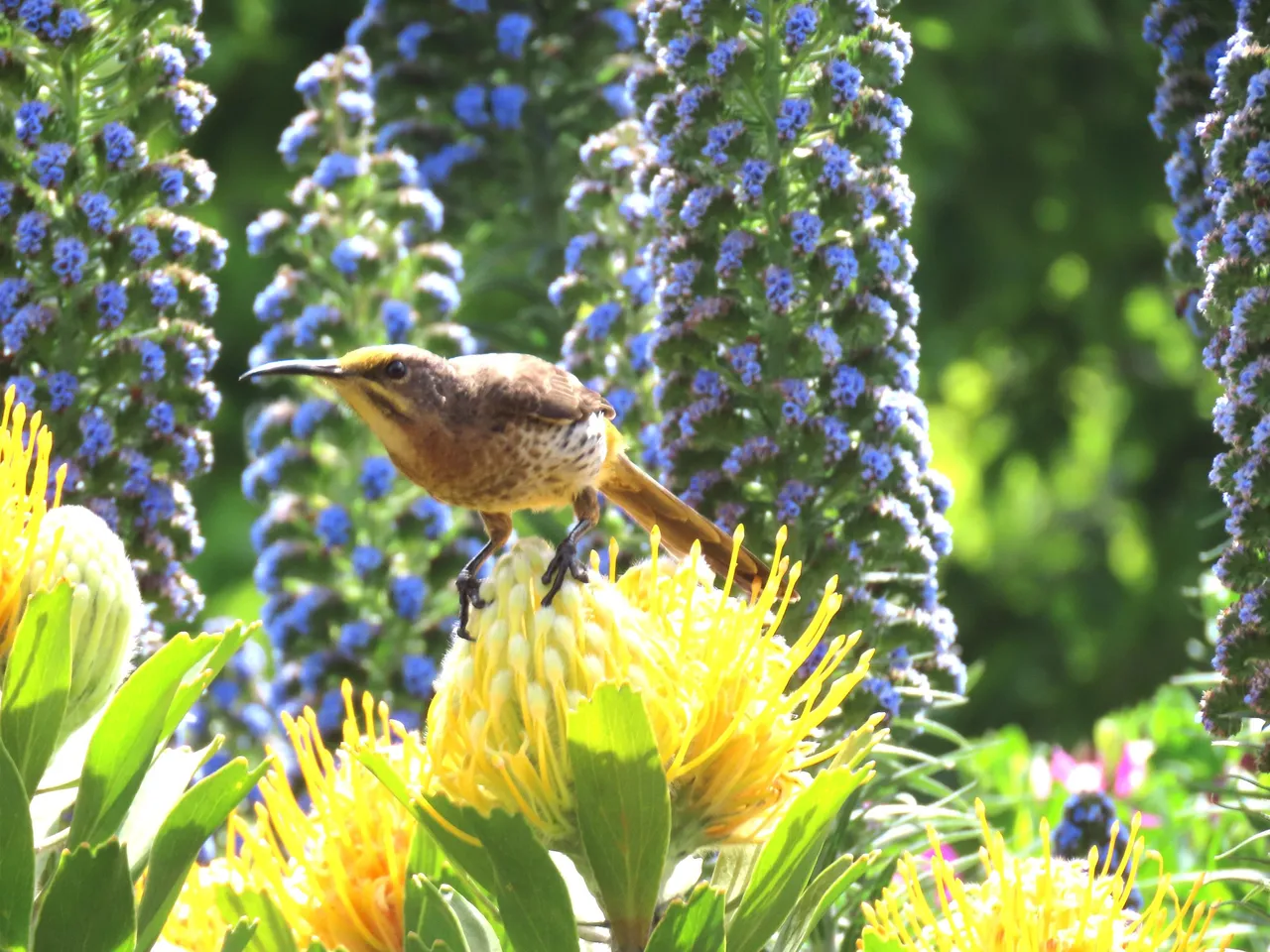

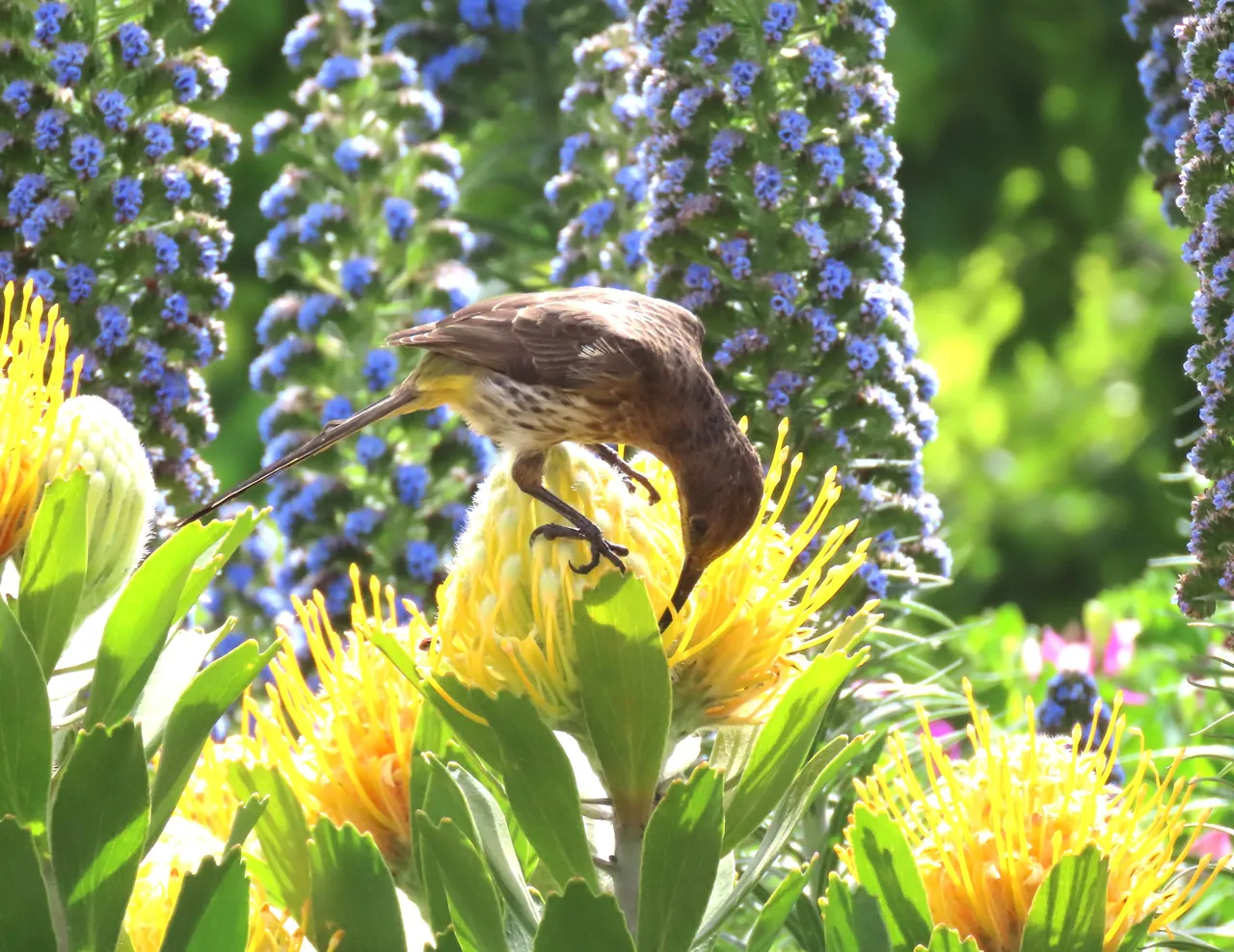
And now our gardener at home arrived.
This is an Olive Thrush (Turdus olivaceus), and this guy makes a big mess when he flips the wood bark mulch over to get at the cutworms under it. We always thought that it was the wind that messed up the garden, but my camera revealed the culprit.
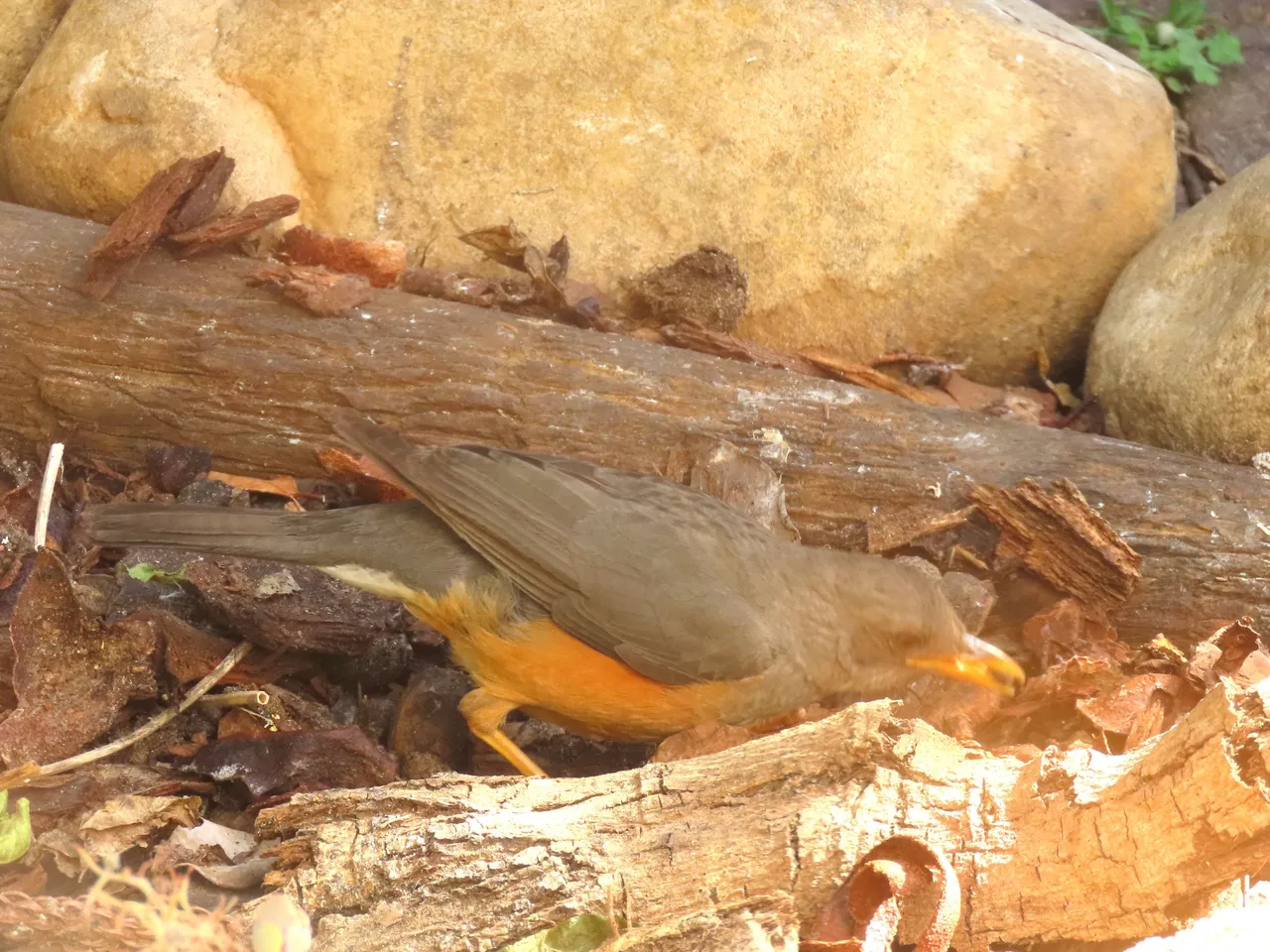
The olive thrush (Turdus olivaceus) is, in its range, one of the most common members of the thrush family (Turdidae). It occurs in African highlands from the montane regions in Eastern and Central Africa in the north to the Cape of Good Hope in the south. It is a bird of forest and woodland but has locally adapted to parks and large gardens in suburban areas.
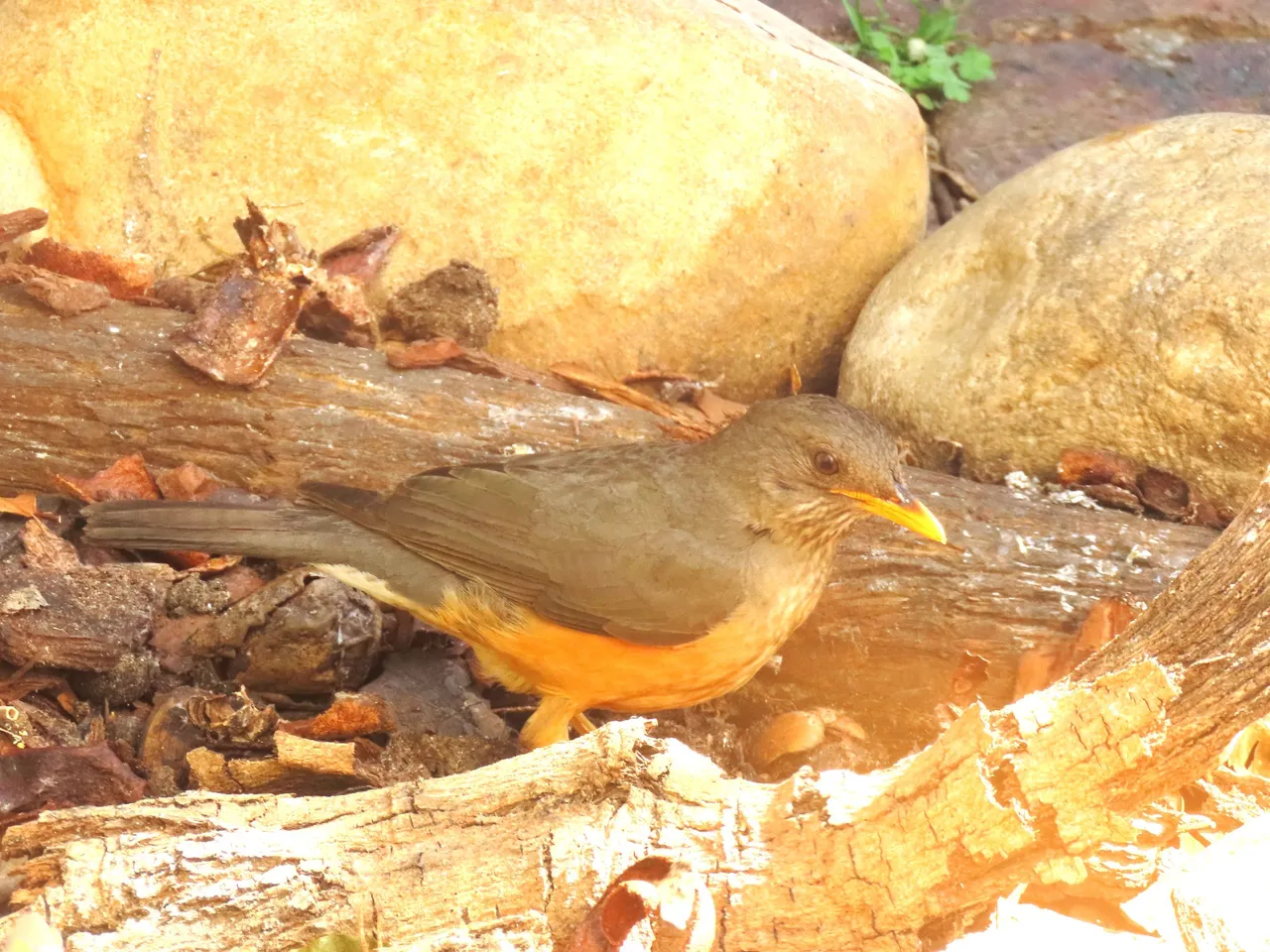
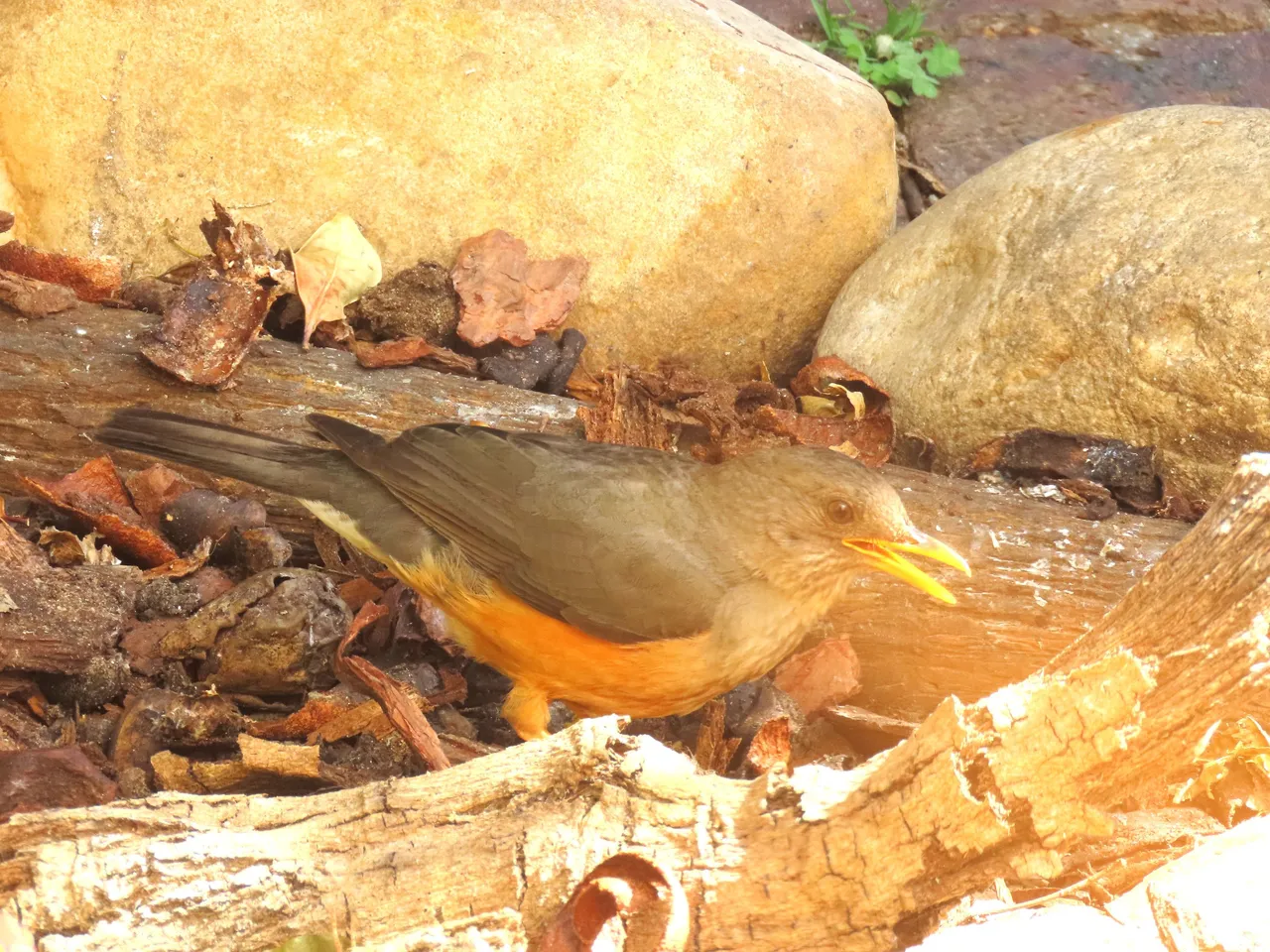
This one below is constantly on her eggs in the nest, but here was a rare view of her out of the nest.
It is the little female Southern Double-collared sunbird (Cynnyris chalebeus) that built her nest in the lemon tree in our small back garden.
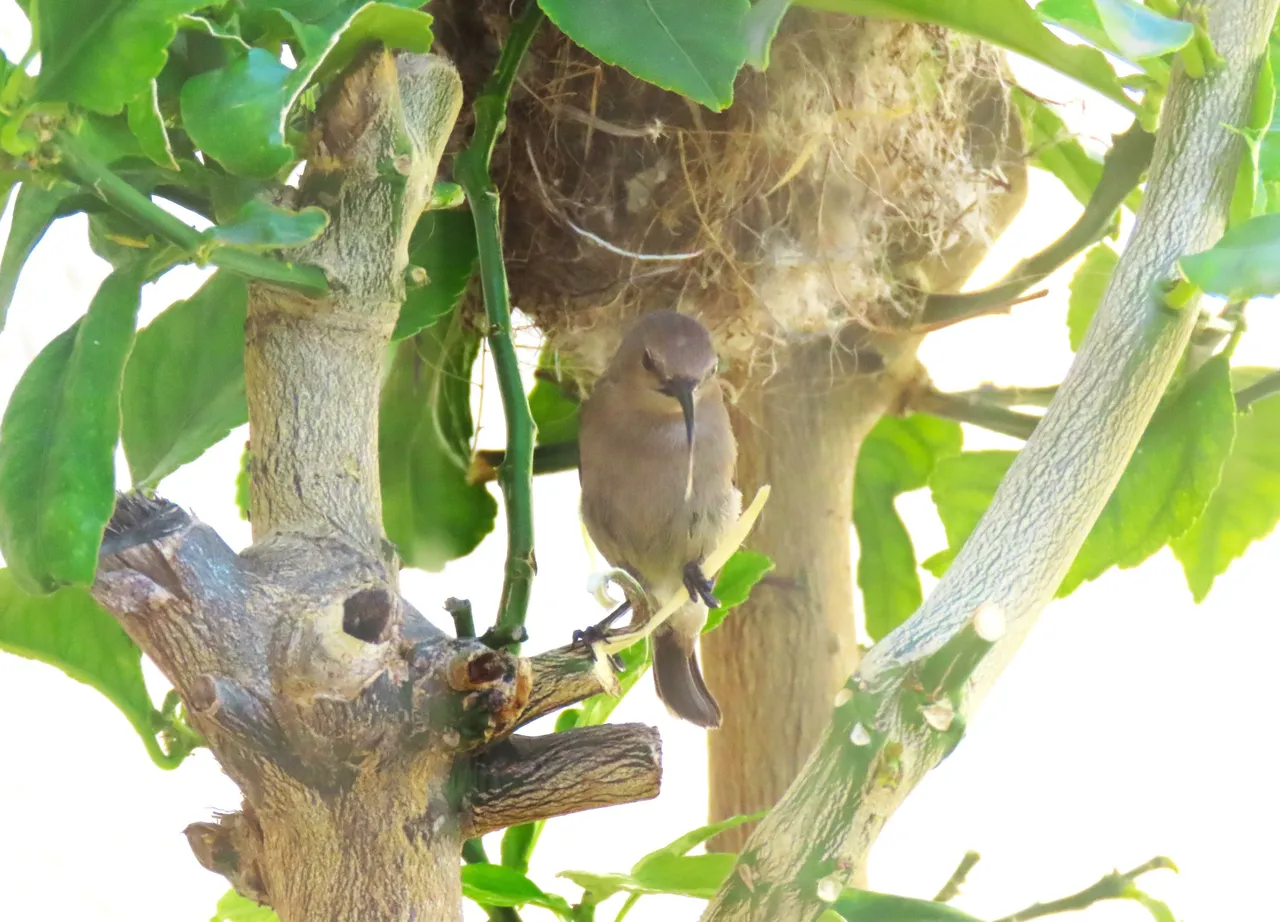
I saw her sitting deep in thought, and I wonder if she was thinking about the day that her new born will hatch. You can see the bottom of her nest behind her.
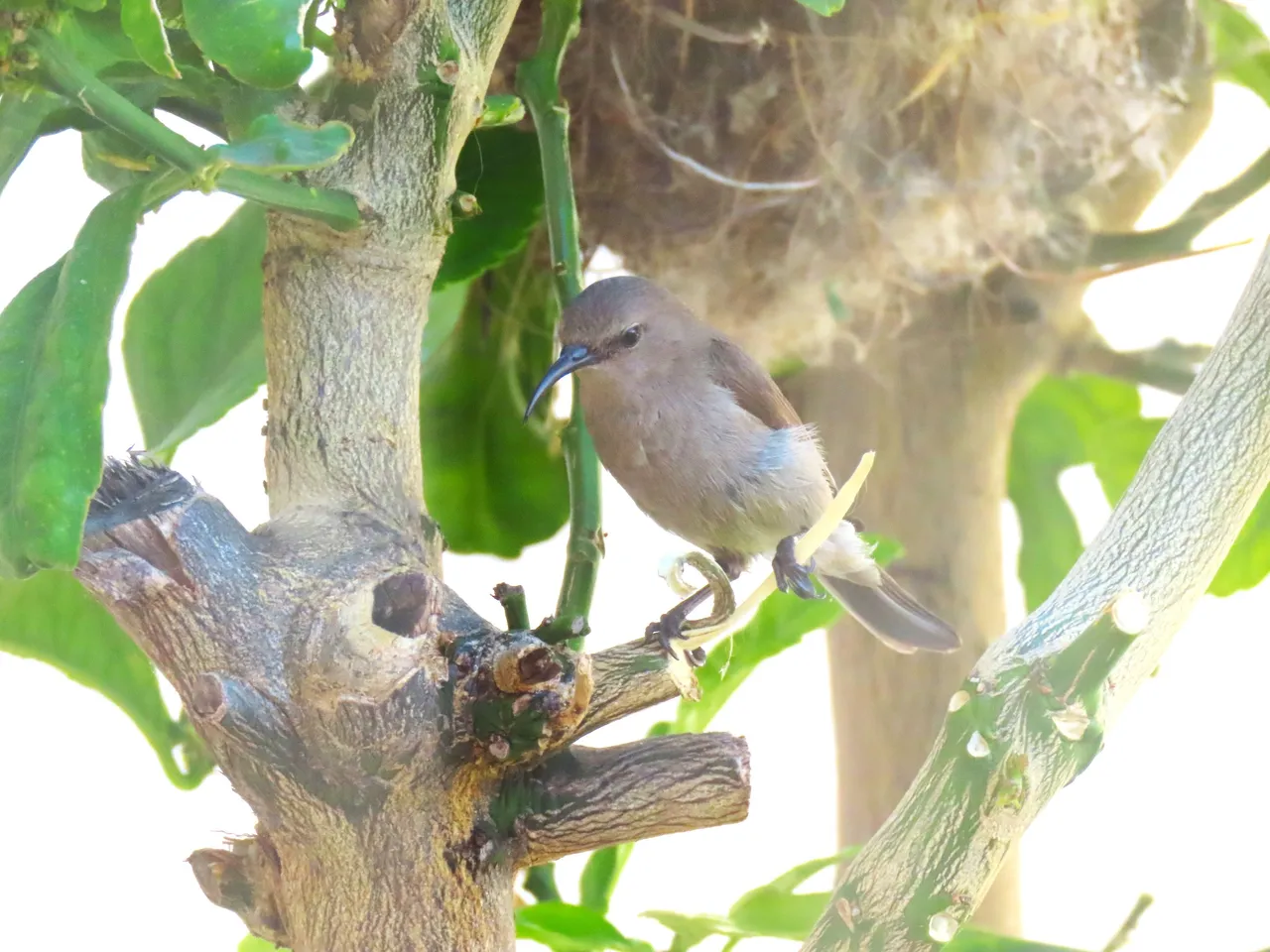
She is a tough little thing, as the strong winds whip the tree branches around, but she simply stays in the nest. Amazing timing to nest, as we are out of the winter rainy season now.
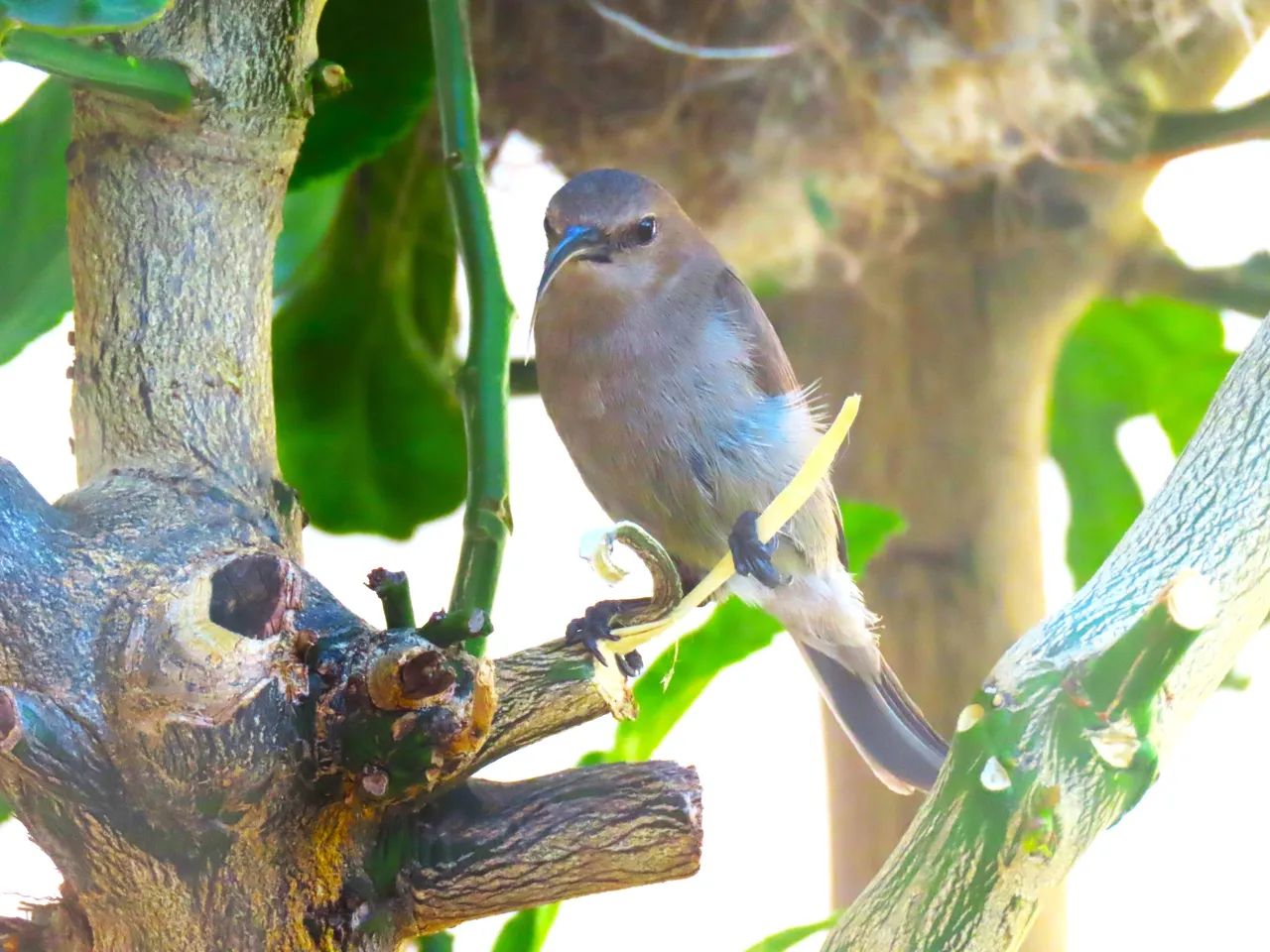
We are very concerned about her decision to build her nest in the back garden, as we have very high walls and when the baby, or babies will leave the nest for the first couple of days, they will not be able to fly over the high walls. So, they will be stuck in the back garden, until they are strong enough to fly. Thankfully there are no dogs, or cats that can get into the back garden and we will just have to keep an eye on things, as they develop. I never thought that one day I would be a baby bird sitter, but such is life :)
I hope that you enjoyed the pictures and the story.
Photos by Zac Smith-All Rights Reserved
Camera, Canon PowershotSX70HS Bridge camera.
Thank you kindly for supporting this post.